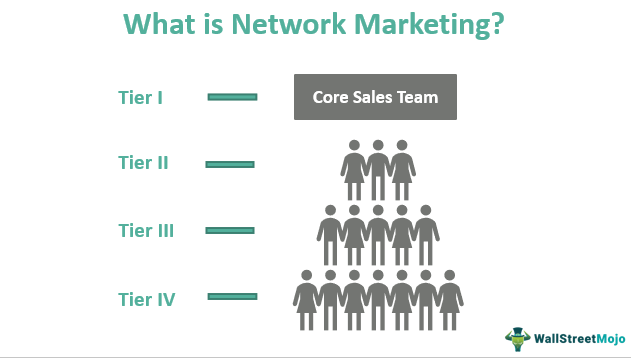
Content Marketing Strategy in Social Networks
Every day we need to be more astute to achieve the objectives that we propose in our content marketing strategies on social networks. And it is that the environment has more and more competition and organic content is getting less and less impact. Therefore, the strategy to consider must focus on how to distribute our content in the most efficient way possible.
We consider it increasingly necessary to promote our content through the ad network of each social network to achieve good results. To decide which network to bet on and in which to publish our content, we will have to attend to our sector, public and objectives.
The content marketing strategy in social networks consists of creating, publishing and distributing interesting content for your audience with the aim of attracting new customers. Image by Tim Bennett, Unsplash.
Blindness to this reality leads us to a number of high channel publications, without this translating into good results.
To this is added, perhaps due to ignorance, the temptation to use third-party content without a license to do so, skip the advertising policies of digital platforms or use data without the corresponding express and unequivocal consent of the user. Practices, all of them, that harm us when it comes to achieving a good brand reputation.
While these practices occur across all networks, each plays a different role and should be used in a different way. This is important, since using the different social channels in the same way can generate an expense that is not profitable.
Types of business, types of networks

Before carrying out a content marketing strategy on social networks, we must study the type of company, network, and sector and public we are addressing, it is very useful to take into account the effectiveness of the social network in which we post.
This criterion, published by the IAB, is easily obtained using the formula (Effectiveness = Interactions / Number of posts). And its results are clear: the most effective networks are Facebook and Instagram.
In the case of Facebook, it is the most general network with an older audience. In fact, according to the IAB study, in Spain it has a community of 28,386,491 users.
On the contrary, Instagram has a lower average age, although it is a more aspirational network and the one that generates the most engagement with the user, reaching 20.3%.
For its part, Twitter is highly specialized by sector and has a very specific user. It is the social network in which most is published (308,080 publications), and it is specific for current or sectoral content.
Facebook and Instagram are not only more effective, they also have a more complete and profitable advertising system. In fact, at Klawter we recommend them to our clients whenever we can.
In relation to the type of company, and regardless of the efforts of their digital marketing teams, not all companies and sectors achieve the same level of interaction with content.
Thus, according to the IAB study, in the food and distribution sector it seems easier to achieve greater efficiency in our network actions. The most difficult are those related to technology, government and politics. Also check descargar videos de twitter
At the budget level, SMEs do not have very high items for their marketing departments. Therefore, the orientation has to be, more than ever, focused on results.
Facebook as a network to distribute our content

Let’s say we choose Facebook to distribute our content.
At this point in the game it is obvious that we need to have quality content, a specialized Community Manager (internal or external) and even a smartphone from which to publish actions or events, or even directly.
With this approach, we can work on the branding of the company. We can also communicate promotions, contests or actions in which an action is required by the user, which will normally focus on sharing or interacting with the content.
If we do not carry out any type of campaign, these contents will be distributed only organically. If we follow this strategy, we run the risk of our content getting less visibility, since Facebook increasingly prioritizes sponsored content to the detriment of those that are not.
One of the positive aspects of Facebook Ads is the absence of barriers to entry. The fact of not needing to invest too much budget in the campaigns encourages many SMEs and companies to embark on the adventure of promoting. However, it is important to clarify that the budgets to be invested will depend on the objectives to be achieved, and that a qualified professional will guarantee better results, and, therefore, a better investment of the budget.
In addition, it is possible to use these ads to promote other types of content, of a more commercial nature. So that they do not negatively impact the content of the feed, it is recommended to work them through hidden posts, that is, without reflection in the channel.
Consequently, we can say that there are two types of content: those intended for branding and those that seek a more direct action by the user.
Tips for your Content Marketing strategy on Social Networks:
-
Types of content
In relation to the type of content that we must use to build promotional campaigns, we must bet on the already famous quality own content. A very recurring alternative is to also opt for royalty-free image banks.
Thus, according to the aforementioned IAB study, we find that the content distributed by brands on Facebook is of low quality, not very user-focused, and that sweepstakes are excessively abused. Quite the opposite happens on Instagram, where despite having much fewer users than Facebook, this second network achieves greater engagement, probably as a result of the quality of its content.
-
Audience generation
When directing campaigns, it is vital to have adequate audience segmentation.
In the Canary Islands, as well as in regions where its critical mass is not very large, you can opt for the creation of small audiences, which allows you to generate qualified audiences without having to invest an excessively high amount of budget.
On the other hand, doubly limiting by interests and applying audience retargeting criteria based on the level of interaction with the content (personalized audiences and similar audiences) are good alternatives. This type of strategy gives results, and more so in an environment where metrics must be the queen of our actions, and whose results must be reviewed immediately to determine whether to continue carrying out this type of action.
-
Campaign objectives
In Facebook Ads, the objectives that can be achieved are diverse. However, most campaigns are focused on traffic, interaction or conversion.
The objectives of each client vary according to the intentions of the brand and the role that social networks play in its strategy.
In the case of wanting to promote a link on our website or a Facebook event, the objective to select will be traffic. In addition to the statistical data that Facebook itself generates as a result of the campaign, having the Google Analytics code installed on our website can help us to obtain even more complete statistical data.
For clients starting out in social networks, it is recommended that they prioritize obtaining an active community, with a good level of interaction, instead of pursuing a larger community with little following.
Thus, a high number of interaction campaigns achieves, as long as there is a good offline service, a good reputation for the brand in the digital sphere. In addition, they allow the generation of personalized audiences that can be extrapolated to other types of campaigns oriented towards a specific action. This second ad can lead to the web or look for a conversion. In addition, they generate very good results if configured correctly.
On the other hand, if you have a database of customers or potential customers, you can work on conversion-oriented campaigns.
For this type of campaigns aimed at qualified contacts, it is necessary to have an attractive and responsive website, which will avoid high bounce rates. In addition, having access to Google Analytics and having the Facebook conversion pixel installed will allow us to generate an appropriate attribution model, with which to determine which leads we have generated as a result of the campaign.
Conclusions
Depending on the objectives of the company, the sector in which it operates, its level of digitization and the type of client it has, it should bet on some social networks or others.
In general, if we are targeting an older audience, with diverse interests and we have a sufficient digital structure (presence in social networks, attractive and responsive web, with Facebook pixel and Google Analytics), Facebook will be our network.
In turn, it is always advisable to bet on sponsored content and campaigns on social networks. These campaigns must always bet on quality content that adds value to the user.




